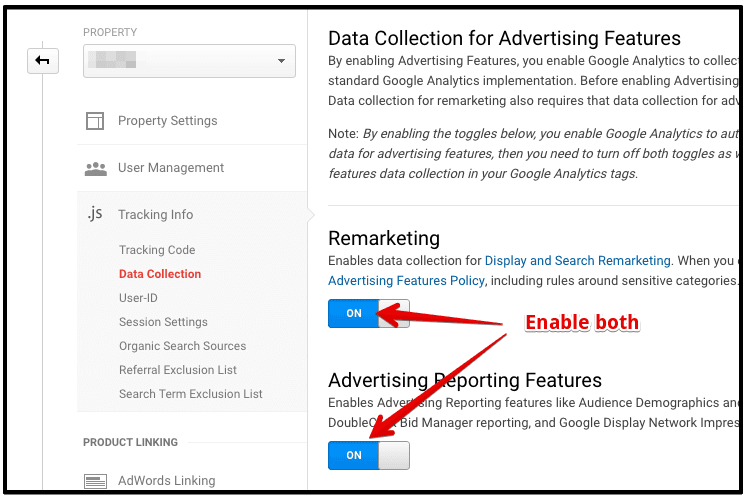Utilizing Remarketing in Google Analytics: A Comprehensive Guide
Taking advantage of remarketing in Google Analytics uses businesses a tactical side in reaching out to potential customers. This guide will certainly lose light on the important actions involved in utilizing the complete potential of remarketing in Google Analytics, leading to enhanced advertising outcomes.
Understanding Remarketing in Google Analytics
Remarketing in Google Analytics allows companies to purposefully target users that have previously communicated with their web site or mobile application. By leveraging data from Google Analytics, businesses can develop customized remarketing checklists based upon customer habits, such as pages checked out, actions taken, or details goals accomplished. This effective device makes it possible for organizations to re-engage with individuals that have revealed interest in their solutions or products, inevitably enhancing the possibility of conversion.
Comprehending the various kinds of remarketing techniques is crucial for an effective project - What Is “Remarketing” In Google Analytics?. Google Analytics supplies numerous alternatives, including common remarketing, dynamic remarketing, and remarketing listings for search ads (RLSA) Each type offers a distinct purpose and can be customized to satisfy particular marketing objectives
In addition, evaluating the efficiency of remarketing campaigns is essential for maximizing results. Google Analytics offers valuable understandings into the effectiveness of various remarketing strategies, permitting services to make data-driven decisions and improve their targeting strategy. By continuously readjusting and keeping an eye on remarketing efforts based on analytics data, organizations can make the most of ROI and drive success in their marketing initiatives.
Establishing Remarketing Campaigns

After setting up audience listings, the next action is to connect Google Analytics with Google Ads. By connecting these two systems, organizations can effortlessly move audience lists from Google Analytics to Google Ads for remarketing purposes. This assimilation enables even more accurate targeting and far better project efficiency.
When the accounts are connected, services can produce remarketing projects in Google Advertisements making use of the audience details previously specified in Google Analytics. These campaigns can be personalized with particular advertisement creatives, messaging, and bidding process techniques to effectively re-engage with past site visitors and drive conversions. By complying with these steps, services can take advantage of the power of remarketing to boost their advertising efforts and increase ROI.
Making Use Of Audience Segmentation Methods

Predefined sectors in Google Analytics enable you to check over here promptly analyze typical audience categories like brand-new customers, returning users, or customers that finished a specific goal on your site. Custom-made sectors, on the other hand, enable you to produce one-of-a-kind sectors based upon specific requirements that are essential to your organization purposes. Dynamic remarketing lists automatically readjust based on individual actions, showing customized ads to individuals that have interacted with your site specifically ways.
Studying Remarketing Performance Metrics
Upon examining the effectiveness of remarketing projects in Google Analytics, the evaluation of essential efficiency metrics supplies important understandings right site web into target market involvement and conversion rates. By delving right into metrics such as click-through rates (CTR), conversion prices, expense per procurement (CPA), and return on ad invest (ROAS), marketers can gauge the success of their remarketing initiatives. CTR suggests the percent of users that clicked on the ad after viewing it, mirroring the advertisement's importance and allure. Conversion rates determine the portion of individuals that completed a preferred action, such as purchasing, after clicking on the ad. CPA discloses the typical cost sustained for each and every conversion, aiding assess project earnings. ROAS, on the other hand, measures the profits produced for every buck invested on marketing. Analyzing these metrics allows online marketers to optimize campaigns, fine-tune audience targeting, and allot budgets effectively to enhance general remarketing efficiency.
Optimizing Remarketing Approaches
When refining remarketing approaches in Google Analytics, focusing on audience segmentation is vital for attaining project success. By splitting your audience into particular sectors based on their habits, demographics, or interests, you can customize your advertisements a lot more successfully to every team. This targeted approach boosts the likelihood of engaging individuals who have currently shown rate of interest in your solutions or items, leading to higher conversion rates.
One more critical aspect of optimizing remarketing approaches is continuously testing and refining your campaigns (What Is “Remarketing” In Google Analytics?). A/B testing different ad creatives, messaging, or deals can assist you recognize what reverberates finest with your audience and drives one of the most conversions. By analyzing the efficiency of these tests in Google Analytics, you can make data-driven choices to optimize your remarketing efforts further
In addition, leveraging vibrant remarketing can substantially enhance your campaign results. This feature allows you to reveal individualized ads to individuals based upon their previous interactions with your internet site, showcasing services or products they have formerly viewed. By providing customized content to individuals based on their rate of interests and habits, dynamic remarketing can assist increase involvement and drive conversions.
Verdict
In verdict, taking advantage of remarketing in Google Analytics is a calculated method to target individuals that have previously involved with a website. By producing tailored audience listings and utilizing target market segmentation approaches, businesses can maximize remarketing advocate enhanced conversion prices. Examining efficiency metrics and continuously maximizing techniques are vital for Recommended Reading making best use of the performance of remarketing initiatives.
Google Analytics provides numerous options, consisting of common remarketing, vibrant remarketing, and remarketing listings for search ads (RLSA)After setting up audience checklists, the next action is to link Google Analytics with Google Ads. By linking these two systems, businesses can seamlessly transfer audience lists from Google Analytics to Google Advertisements for remarketing purposes.Once the accounts are linked, companies can produce remarketing projects in Google Ads making use of the target market details previously specified in Google Analytics.When refining remarketing strategies in Google Analytics, concentrating on target market segmentation is critical for attaining project success.